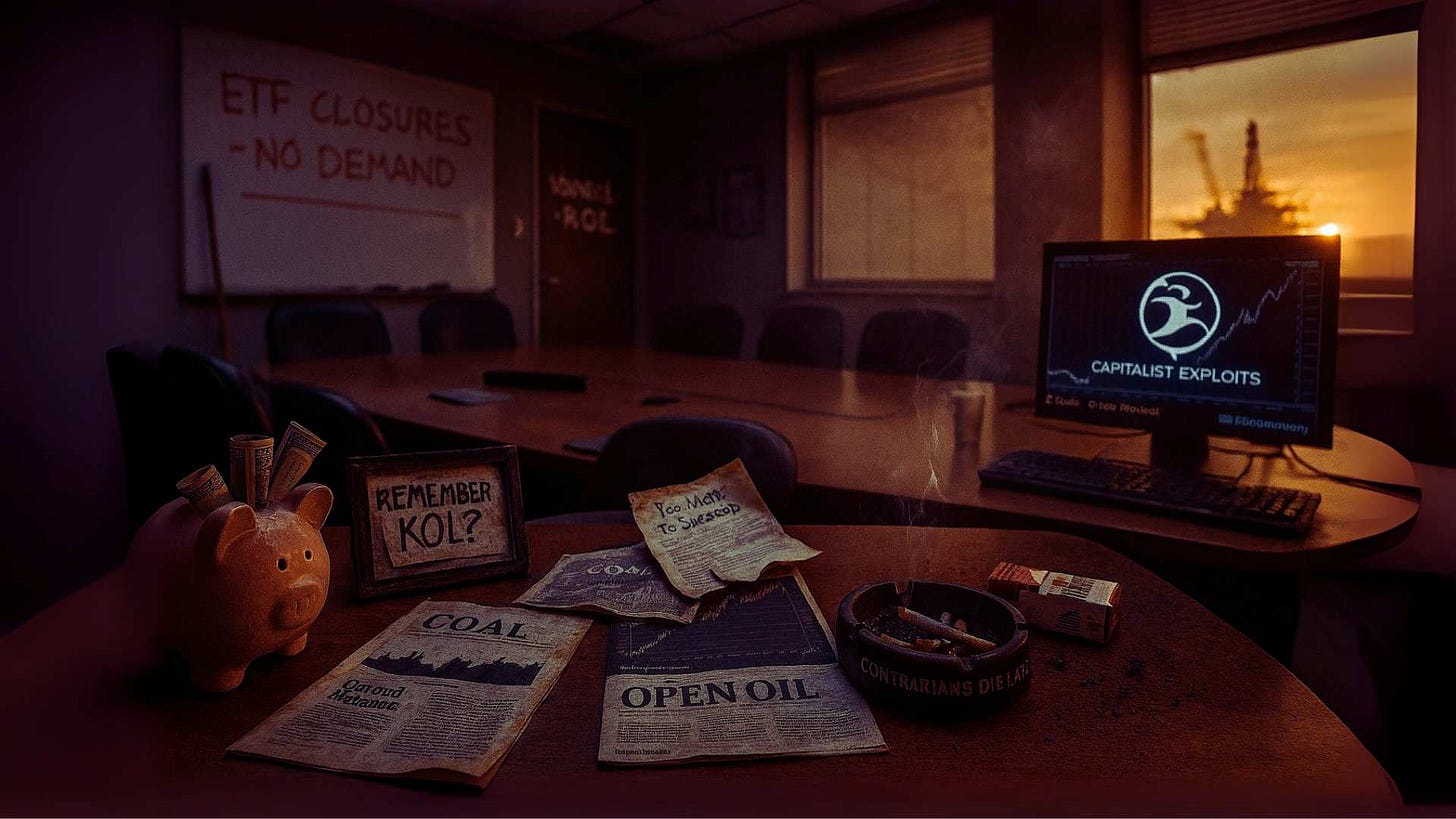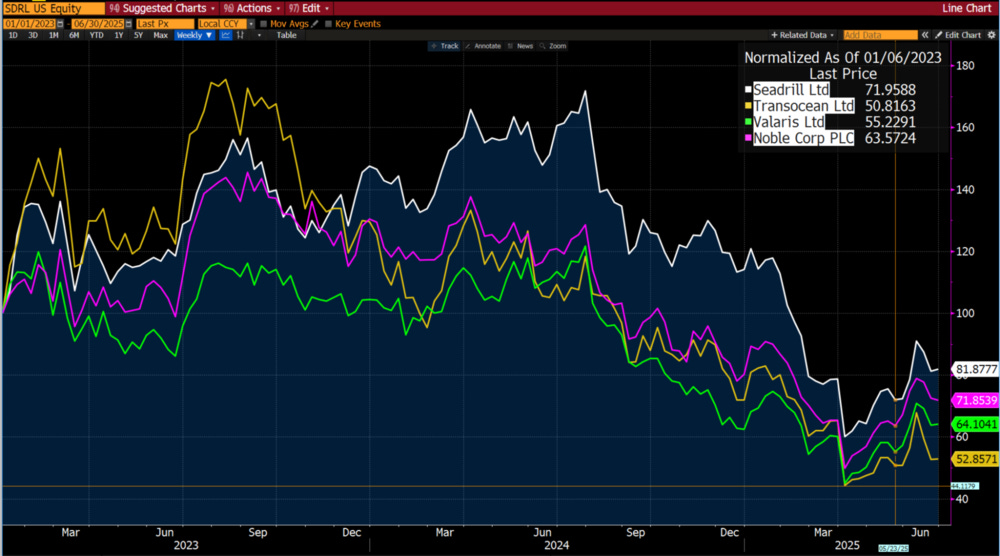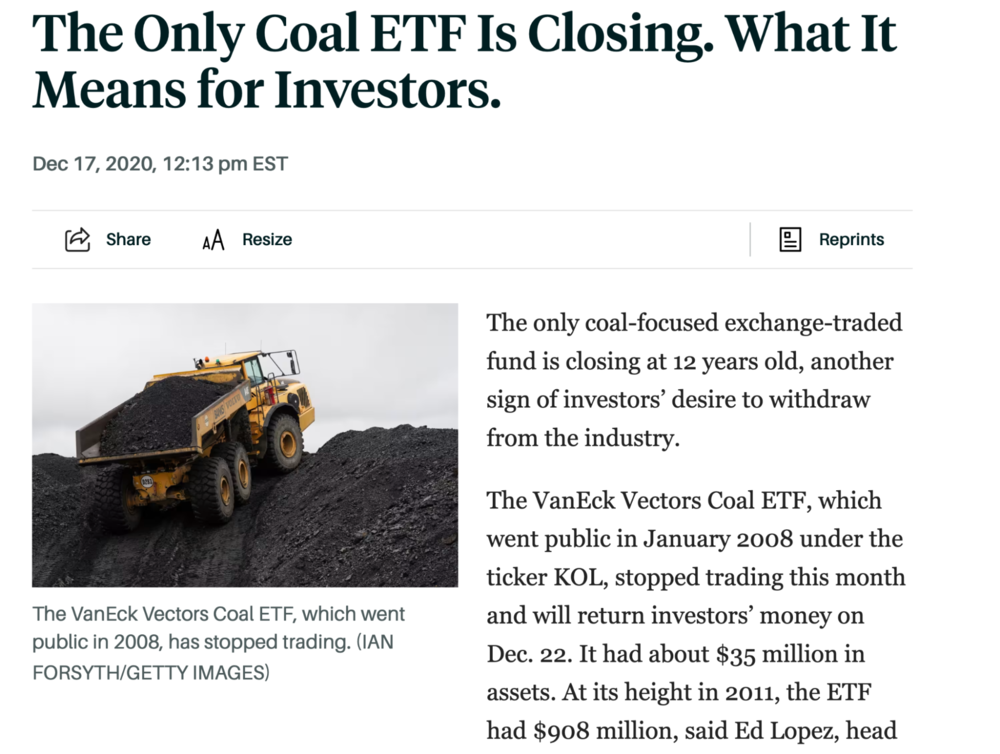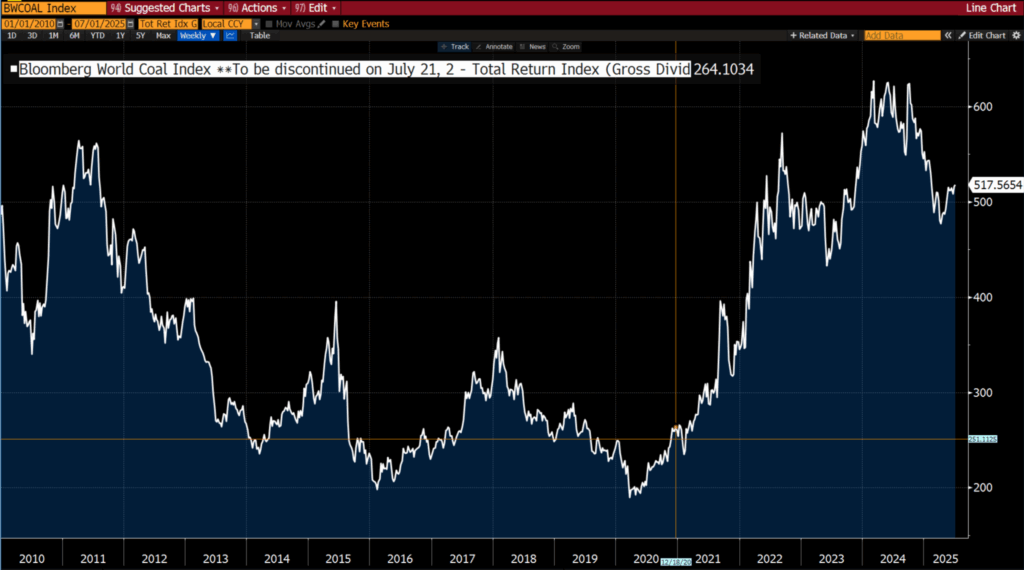The World’s Most Uncrowded Trade
It pays to be contrary as an investor. But as an ETF provider? Not so much!
When ETFs close down due to lack of demand, it is a strong contrary sign.
See, there is a reason why we didn’t invest in OFOS (other than lack of liquidity).
It pays to be contrary as an investor. But as an ETF provider? Not so much!
Let’s put a line in the sand. The long-term bottom in offshore oil services (in the SPDR S&P Oil & Gas Equipment & Services ETF) was registered on 4 April 2025.
Don’t forget this, and let’s revisit it five years from now. And also remember this (in case you forgot):
Well done! The closing down of the VanEck Vectors Coal ETF (KOL) almost “bottom ticked” the end of a 10-year bear market in December 2020.
We remember KOL well. We bought it back in December 2019 (Insider/Glenorchy), sold out just before liquidation in December 2020, and with the proceeds bought a basket of coal miners which we continue to hold.
Those folks who bought in way back in 2019 or 2020 would have received returns more or less in line with the Bloomberg World Coal Index on a total return basis (dividends reinvested) — up some 120%, whereas the index itself is up some 46%.
Yes, dividends over time do make a hell of a difference.
Remember When “Smoking Kills?”
Remember all those “scare the hell out of you” anti-smoking ads of the 1970s and 1980s?
In 1980, you could have easily come to the conclusion that smoking was on its way out and that investing in cigarette stocks was the dumbest investment you could have made for the next 30 years.
Anyway, let’s assume my father had an epiphany in 1980.
He quit smoking and put $100 (equivalent to about $500 in today’s terms) into a brokerage account investing in one stock (Altria) and instructed his broker to reinvest dividends.
That $100 would be worth $127,000 today (or $16,539 if those funds were invested in the Dow).
Goodness knows how much that investment would be worth today if my father had also invested the equivalent of the cost of a packet of Marlboro a week into the brokerage account, only stopping in 2006 when he died (although, maybe if he had quit in 1980, he would have lived a lot longer).
That was about $1 per week in 1980 and $1.60 per week in 1990.
Actually, if you compound $100 at 17.5% per year for 45 years and add $50 every year, the total becomes close to $600,000.
All well and good! But in 1980 investing in cigarette stocks (like Altria) would have likely been about as popular as investing in oil and gas stocks today (like Exxon).
It would be an interesting experiment to put $10,000 into a brokerage account for each of my children with dividends reinvested and adding $10,000 per year — just to see where it gets to 30 years from now. Hopefully, I will be around in 30 years to see the outcome!.
Of course, the question is, is Exxon the right choice? I guess time will tell!
☝️ Want to Front-Run the Next Big Capital Rotation?
Join Insider…our premium research service built for investors who prefer low-risk, high-reward setups.
Real-time access to the exact asymmetric positions we’re taking across global markets.
Deep-dive research with context, cycles, and capital flow insight you won’t get anywhere else.
Step-by-step guidance on what to buy, when to buy, and when to get the hell out.
No fluff, no hype—just actionable intel from a team that’s managing millions.
Plus, monthly Q&As, member forums, and full portfolio access.
We don't trade narratives. We allocate capital where others aren't looking…yet.
👉 Become a paid member and get immediate access to our entire portfolio
Because by the time it’s obvious, it’s already expensive.













Also battery and energy storage ETF (WBAT)
A good time to point out that the total return platinum ETF (PGMFF) closed down on June 25,2025.